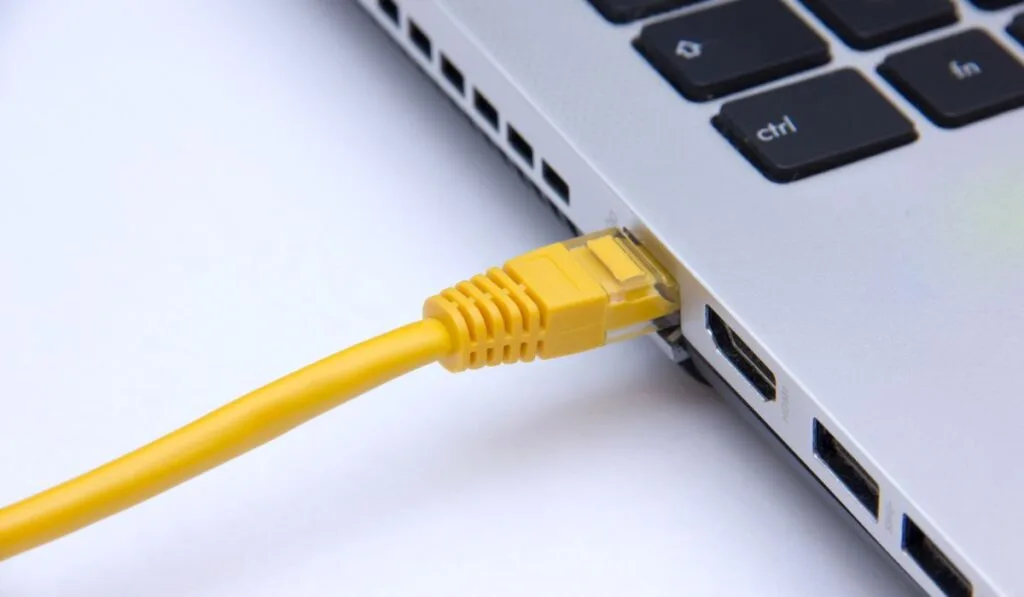There’s a reason why a slow internet connection is among the first-world problems. It is inconvenient, annoying, and disrupts us from our daily activities. So how do you check the internet connection on your Mac?
Tools such as Cloudflare and Speedtest will help you test your internet connection. Go to speedtest.net and click GO. You’ll be presented with your internet speed, ping time, and download speeds. You can also use other tools like Cloudflare and Speedtest by Ookla.
Other times, your concern might not be how fast your internet connection is but whether or not it’s even working. We’ll show you how to check your Mac’s internet connection and a few troubleshooting tips for an unresponsive network connection.
How Do You Check the Internet Connection on a Mac?

You can perform a few tests to check how fast the internet is on your Mac. For starters, pause any ongoing downloads and uploads. Your VPN will affect your internet speed, so turn it off if you are using one. You are now ready to perform the speed test.
On your Mac, go to speedtest.net and click go. This test will show you how fast your internet speed is, your ping time, and your download and upload speeds.
You can use other tools to perform a speed test, such as Cloudflare speed test and Speedtest by Ookla. You’ll have to download Speedtest from the App Store.
What to Do if Your Internet Won’t Connect
Here are a few troubleshooting tips to try out if your internet won’t connect.
Switch to a Different Web Browser
Your browser may be malfunctioning, and that’s why you encounter delays in loading videos and accessing web pages. Resolve this by clearing your browser’s cache and history.
Here’s how to clear your browser’s cache and history:
For Safari:
- Go to History > Clear History > and click the pop-up menu.
For Chrome:
- At the top right, click More > More tools > Clear Browsing Data.
- Choose a time range and click Clear Data.
If the problem persists, try using a different web browser. You could go with many options: Safari, Chrome, Firefox, Opera, and Microsoft Edge, among others.
You may also be downloading multiple files simultaneously, leading to a slower connection. Pause the queue and download your files one at a go.
Restart Your Device
Rebooting your device is usually a viable solution to most software glitches. So, try restarting your Mac and rejoining the network and see whether it fixes the problem.
Here’s how to reboot your Mac:
- First, close any active app, file, or tab to ensure you don’t lose any unsaved documents or important data.
- Next, move your cursor to the menu bar and click on the Apple logo.
- Click Restart.
Troubleshoot Your Router
The problem may be with your router, so confirm it is working correctly. Then, you can adjust its location and do away with any signal interference. This may sound obvious, but your router’s proximity to your computer will also determine its connection speed.
Placing your router far from your Mac will weaken its signal strength and slow the connection. Instead, make sure your Mac and router are close to each other. You can also move away kitchen appliances and other electronic devices that may weaken the router’s signal.
Your router’s status light indicates the internet’s strength or status. For example, a red or blinking status light indicates a connection outage or downtime. A solid LED light is a good indication that the connection is stable. Confirm with your instruction manual, as the lights may differ with models.
Finally, if all these things are in place and the internet is still not working correctly, consider restarting or resetting your router. It may help restore everything to normalcy. Shut down your router, wait a few seconds, and turn it back on.
Reset Wi-Fi Settings
Cracking the nut on your internet problems may be difficult, but resetting your Wi-Fi settings may seal the deal. Here’s how to do it.
- On your Mac, go to System Preferences.
- Find Network and click on it.
- Choose Wi-Fi on the sidebar menu, then click on the minus (–) icon at the bottom.
- Click Apply. This will disconnect your Mac from any active Wi-Fi connection. Then, click on the Plus (+) icon after a few seconds.
- A new pop-up window will appear. Click on Interface and select Wi-Fi. Select Create to proceed.
- Go to the bottom right corner and click Apply to save the changes.
Switch off your Mac’s Wi-Fi, wait for a few seconds and reconnect it to the network. Now, check the connection speed.
Use Ethernet (or Wired) Connection

Ethernet is typically faster and more stable than other internet connection types, including Wi-Fi. So if everything seems to fail, consider upgrading to an ethernet connection. Sure, it’s slightly more expensive but worth it.
Use a USB to Ethernet adapter if your MacBook doesn’t have an ethernet port.
Faster Internet for Better Experience
Congrats! Your internet is back to working as before. You can play online games, download files and videos and even attend video conferences without lag. It’s the world we all dream of. Still having problems? Feel free to reach out to us.
